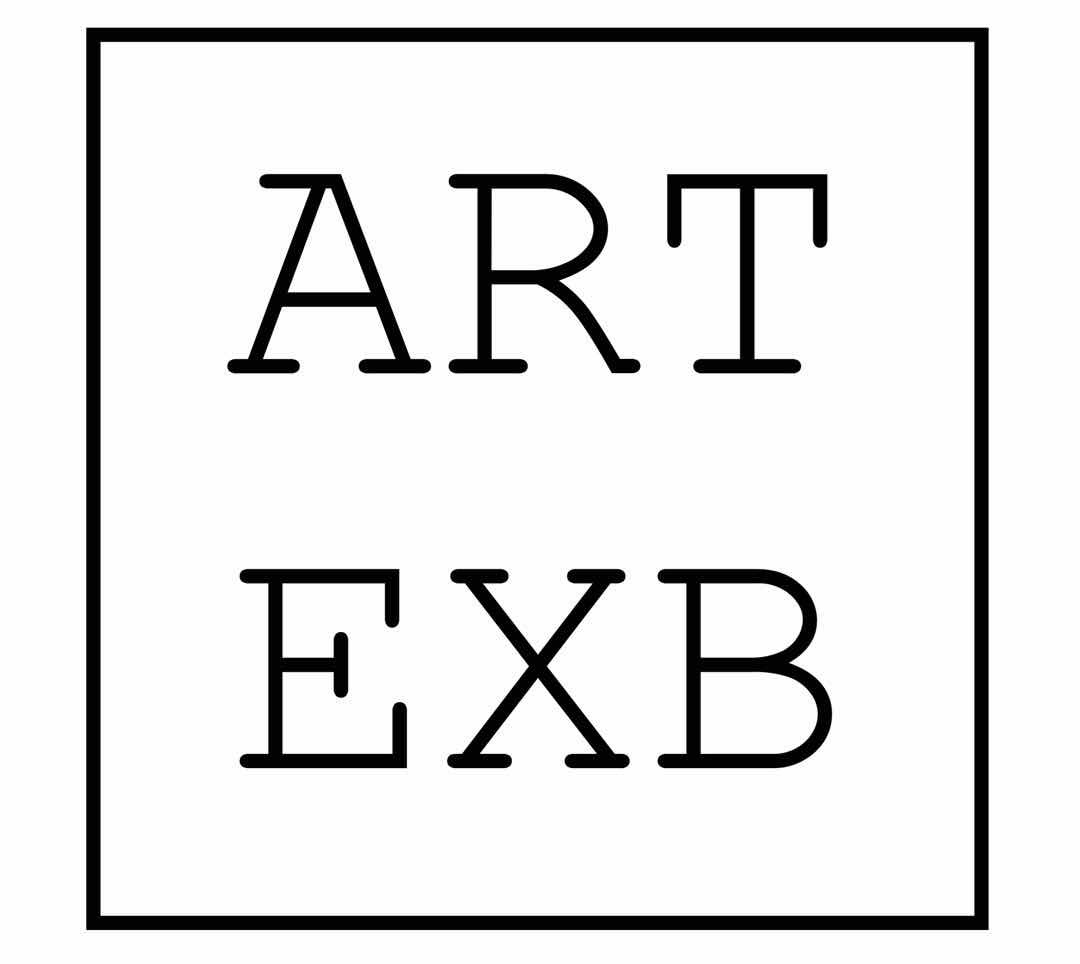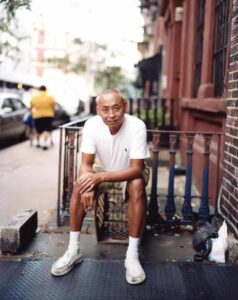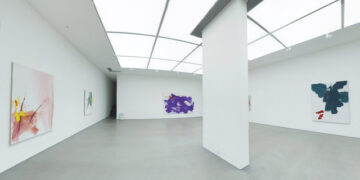张伟是中国当代艺术始发时期的抽象画家的先行者。在20世纪70年代,张伟加入了一个青年艺术家自发组织的艺术团体——“无名画会”。从20世纪80年代至今他一直在抽象绘画中探索。
张伟,1952年生于北京。从20世纪70年代开始,张伟与其他后来被称之为“无名画会”的成员们开始风景写生。艺术生产还笼罩在“文化大革命”的阴翳之下,这群艺术家已开始秘密在公园或城郊写生,希望借此打开绘画的创造力和生命力。在没有接受过任何正规的艺术教育的情况下,张伟早期的艺术实践中,他旨在呈现物体、人物、风景的印象。受益于老一辈无名画会成员杨雨澍与赵文量的指点,张伟发现了自己的视觉语言。他对于传统的中国画的兴趣和了解,以及在北京昆曲社的工作经历,促使艺术家尝试印象派元素,并且转换到画面上。
在80年代早期中国美术馆的“波士顿美术馆美国绘画展”巡展中,张伟对于弗兰兹·克莱因、杰克逊·波洛克,海伦·弗兰肯塔尔的作品产生了很大兴趣。这次经历使得张伟下定决心尝试抽象创作。80年代早期,张伟的作品逐渐减少了笔触的运用而创造画面的张力。各种视觉元素逐渐被引入到他的艺术实践中,比如张伟运用了道教的观念,将讽刺性的思维转化为色彩的运用方式,随后转向了“屋漏痕”的绘画技法。通过调试松节油的比例,使油画色彩在画布上延伸,并留下纹路。在其他的作品中,书法概念,尤其是草书的运用增加了作品的书写性。 张伟的作品一方面转向“行动绘画”,拓展了画面的笔触规模,然而画面中却散发着中国美学的力量。
对于张伟的艺术实践来说,选择用油画作为艺术媒介的原因在于,无论是绘画中的技术、视觉线索、甚至概念性的指导,艺术家的主要目的在于主观性的视觉传达,而主观性是遵从自由的,这种自由在中国传统文化中是缺乏的。
张伟的作品已经在国际重大展览中展出:M+希克藏品:中国当代艺术四十年、黎明前的晨曦:1974-85年间的中国非官方艺术等。他的作品曾被芝加哥艺术博物馆、M+当代博物馆以及私人收藏。
Zhang Wei was one of the first abstract painters in contemporary China. He joined a self-organized group of young painters to be known as the “No Name Group” in the early 1970s, and began to explore abstraction in the early 1980s until today.
Zhang Wei, born in 1952 in Beijing. Zhang Wei began painting en-plein-air in the early 1970s with a group of artists later to be known as the “No Name Group”. Still at the heat of the Cultural Revolution, these artists sought out means to channel their creative energy on canvas by venturing on clandestine trips in the parks or on the outskirts of the city. Without having received any formal art education, in Zhang Wei’s early phase of artistic practice, he aimed at rendering the impression of an object, figure or the landscape. The guidance he received from the older members of the group, Zhao Wenliang and Yang Yushu inspired him to discover his own visual language. His interest and knowledge in traditional Chinese painting, and his job at the Beijing Kunqu Opera Troupe further contributed to the artist’s inclination of drawing from his own impressionist elements and translating them onto canvas.
In the early 1980s, a traveling exhibition of American art presented at the National Art Gallery, in which the works of Franz Klein, Jackson Pollock and Helen Frankenthaler opened the eyes of the artist, an experience that provided him with firm belief and determination to experiment with abstraction. As of the early 1980s, Zhang Wei’s imageries became gradually reduced to executions of brushworks that created tension on canvas. Various visual elements are introduced into his practice over time, for example the notion in Daoism, in which, Zhang Wei applies a caustic logic of one leading to the next in the way he applied colors, others engage painting techniques of “water leakage” where the application of the oil and paint differentiate the texture on canvas, in other works, the notion of calligraphy, in particular, of the cursive style that emphasized on the energy of the calligrapher. On the one hand, Zhang Wei’s painting draws formal affinity to “action painting” in expanding the scale of a brush mark, while the energy executed remains aesthetically Chinese. The pertinent reason for the artist to have chosen oil painting as a medium of his art practice is that, in spite of techniques, visual cues or even notional guidelines in the making of these paintings, the aim of the artist is to give his own subjectivity a visual expression, a subjectivity that esteems freedom, which is largely absent in Chinese traditional culture.
Zhang Wei’s works have been the subject of major international exhibitions, M+ Sigg Collection: Four Decades of Chinese Contemporary Art, ArtisTree, Hong Kong; Blooming in the Shadows: Unofficial Chinese Art, 1974-1985, China Institute Gallery, New York, USA. His works have been acquired by art institutions such as The Chicago Art Institute; the M+ Museum and other reputable private collections.


